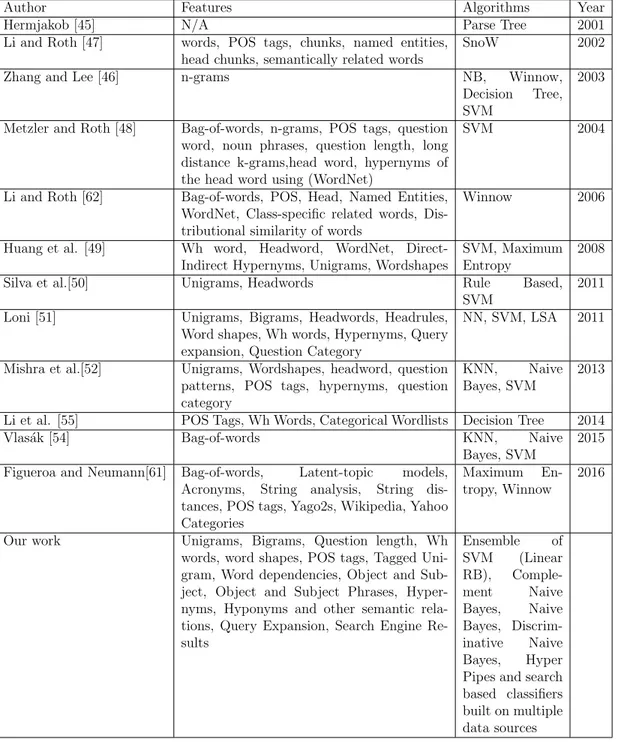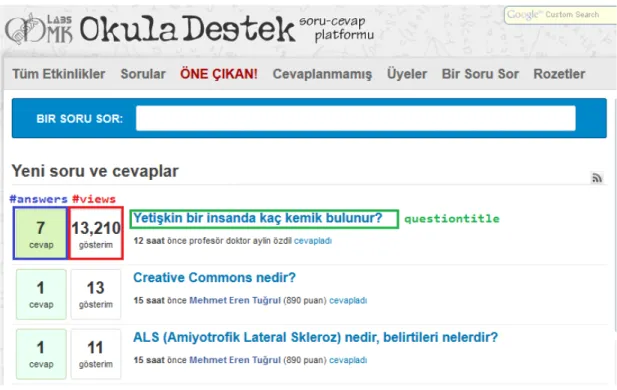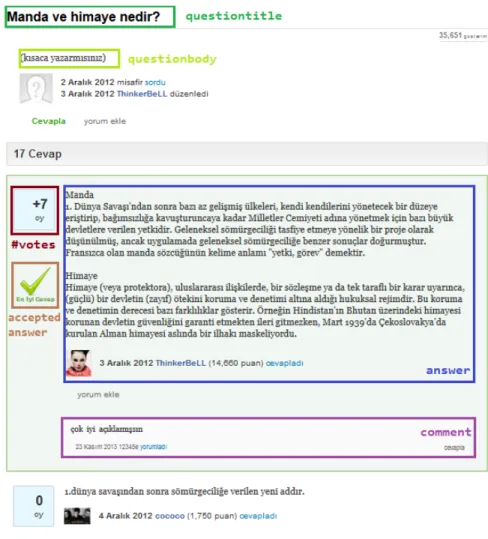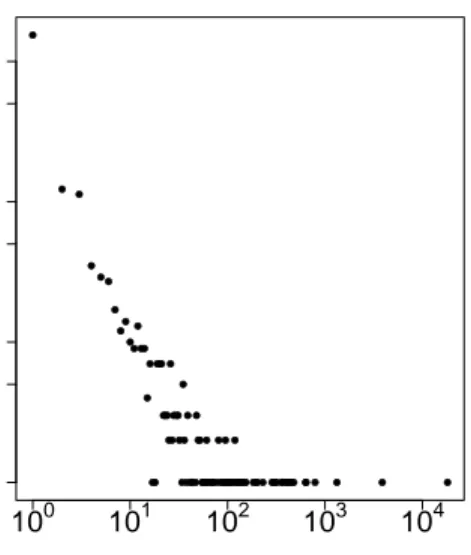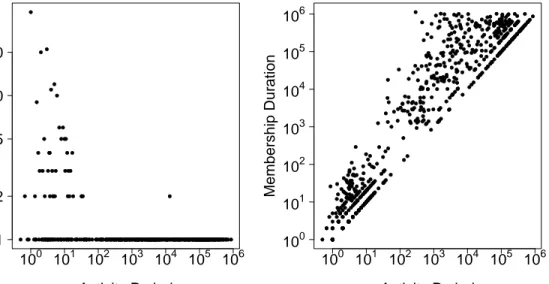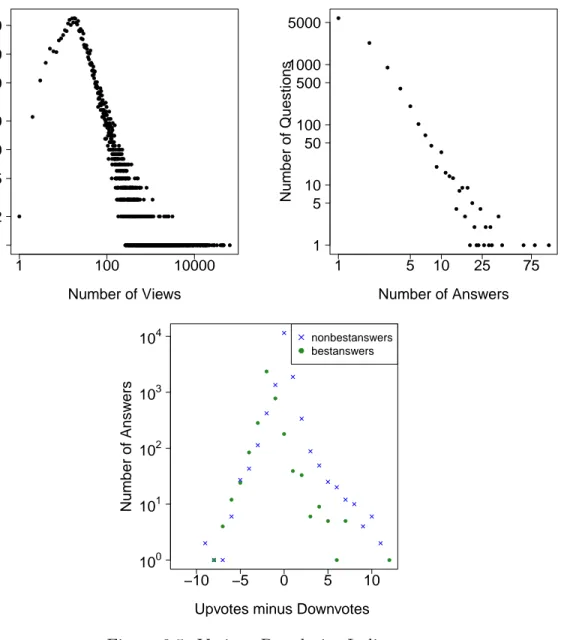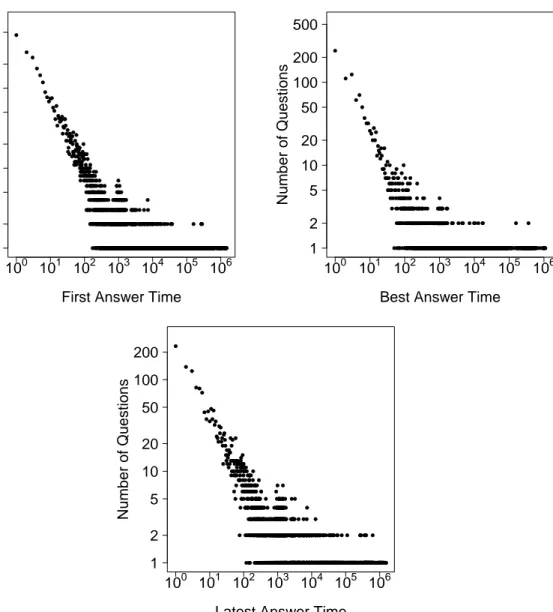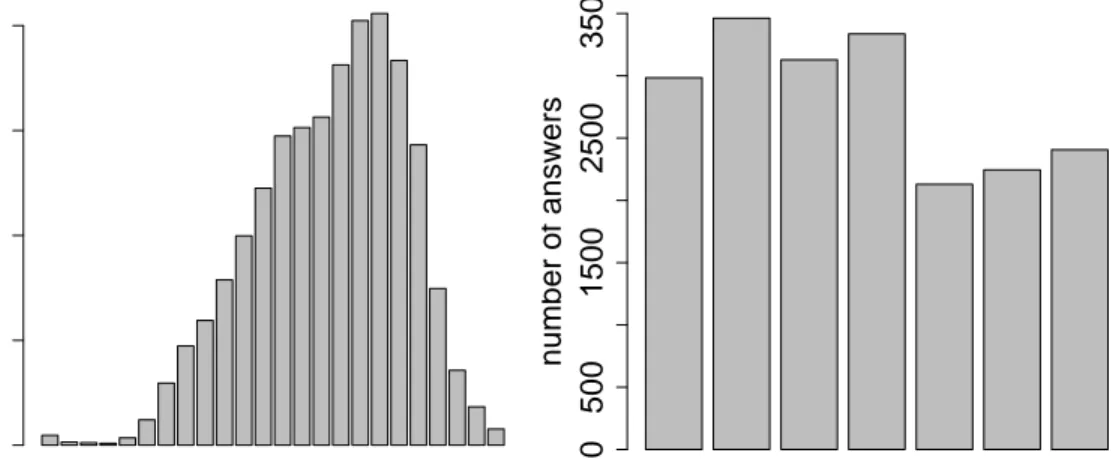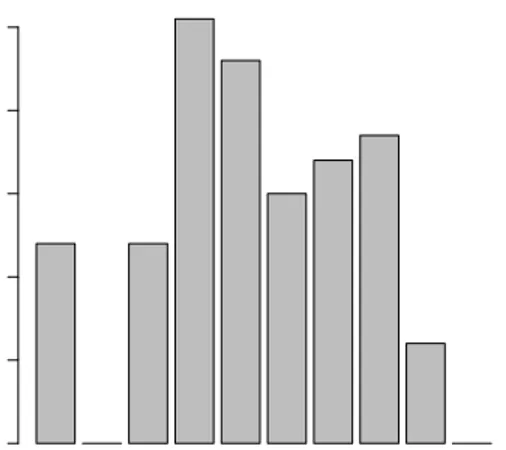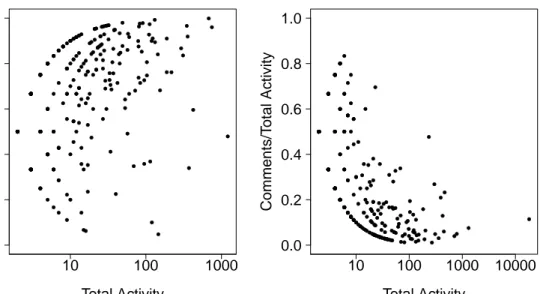IMPROVING EDUCATIONAL SEARCH AND
QUESTION ANSWERING
a thesis submitted to
the graduate school of engineering and science
of bilkent university
in partial fulfillment of the requirements for
the degree of
master of science
in
computer engineering
By
Tolga Yılmaz
June 2016
IMPROVING EDUCATIONAL SEARCH AND QUESTION ANSWERING
By Tolga Yılmaz June 2016
We certify that we have read this thesis and that in our opinion it is fully adequate, in scope and in quality, as a thesis for the degree of Master of Science.
¨
Ozg¨ur Ulusoy(Advisor)
Fazlı Can
Rıfat ¨Ozcan
ABSTRACT
IMPROVING EDUCATIONAL SEARCH AND
QUESTION ANSWERING
Tolga Yılmaz
M.S. in Computer Engineering Advisor: ¨Ozg¨ur Ulusoy
June 2016
Students use general web search engines (GSEs) as their primary source of re-search while trying to find answers to school related questions. Although GSEs are highly relevant for the general population, they may return results that are out of education context. Another rising trend; social community question an-swering websites (CQ&A) are the secondary choice for students who try to get answers from other peers online. We focus on discovering possible improvements on educational search by leveraging both of the two information sources.
The first part of our work involves Q&A websites. In order to gain contextual and behavioral insights, we extract the content of a commonly used educational Q&A website with a scraper we implement. We analyze the content in terms of user behavior and try to understand to what extent the educational Q&A differs from the general purpose Q&A.
In the second part, we implement a classifier for educational questions. This classifier is built by an ensemble method that employs several regular learning algorithms and retrieval based ones that utilize external resources. We also build a query expander to facilitate classification. We further improve the classification using search engine results.
In the third part, in order to find out whether search engine ranking can be improved in the education domain using the classification model, we collect and label a set of query results retrieved from a GSE. We propose five ad-hoc methods to improve search ranking based on the idea that the query-document category relation is an indicator of relevance. We evaluate these methods on various query sets and show that some of the methods significantly improve the rankings in the education domain.
iv
In the last part, we focus on educational spell checking. In educational search systems, it is common for users to make spelling mistakes. Actual query logs of two commercial search engines in the education domain are analyzed in terms of spelling mistakes using 5 well-known spell correction software that are not education specific and lack the terms that are used in the education field. It is shown that by extending the spell-check dictionary of one of them, even with a small-sized education oriented word-list, one can improve the precision, recall and F1 values of a spell-checker.
¨
OZET
E ˘
G˙ITSEL ARAMA VE SORU CEVAPLANDIRMANIN
GEL˙IS
¸T˙IR˙ILMES˙I
Tolga Yılmaz
Bilgisayar M¨uhendisli˘gi, Y¨uksek Lisans Tez Danı¸smanı: ¨Ozg¨ur Ulusoy
Haziran 2016
¨
O˘grenciler, okulla ilgili soruları i¸cin ilk tercih olarak arama motorlarını kullanırlar. Arama motorları, her ne kadar genel pop¨ulasyon i¸cin olduk¸ca kullanı¸slı olsa da e˘gitim kurgusunun dı¸sında yanıtlar getirebilir. Bir ba¸ska e˘gilim, sosyal a˘g soru-cevap web siteleri ise emsallerinden soru-cevaplar almak isteyen ¨o˘grenciler i¸cin ikinci bir se¸cenek olarak kar¸sımıza ¸cıkmaktadır. C¸ alı¸smamızda, bu iki bilgi kayna˘gının birbirlerinden faydalanılarak geli¸stirilmesi ¨uzerinde durulmu¸stur.
C¸ alı¸smamızın ilk kısmı soru-cevap web siteleri ile ilgilidir. E˘gitsel soru-cevap web siteleri ¨uzerinde ba˘glamsal ve davranı¸ssal anlayı¸sa sahip olmak i¸cin bir soru-cevap web sitesinin i¸ceri˘gi toplanmı¸stır. Bu i¸cerik, kullanıcı davranı¸sları ve e˘gitsel soru-cevap sitelerinin genel soru-cevap sitelerinden ne derece farklı oldu˘gunu an-lamak a¸cısından analiz edilmi¸stir.
˙Ikinci kısımda, e˘gitsel sorular i¸cin bir sınıflandırıcı geli¸stirilmi¸stir. Bu sınıflandırıcı makine ¨o˘grenmesi tabanlı bir ka¸c algoritma ile dı¸s kaynaklar ¨uzerinde olu¸sturulmu¸s bir ka¸c arama tabanlı sınıflandırıcıdan olu¸san bir “ensemble” sınıflandırıcıdır. Ayrıca, sınıflandırmayı g¨u¸clendirmek i¸cin bir sorgu geni¸sletme y¨ontemi geli¸stirilip kullanılmı¸stır. Olu¸san bu sınıflandırıcı, son olarak arama mo-toru sonu¸c sayfaları da kullanılarak daha da geli¸stirilmi¸stir.
¨
U¸c¨unc¨u kısımda, e˘gitsel arama motoru sıralamasının sınıflandırma modeli kul-lanılarak geli¸stirilebilirli˘gini test etmek i¸cin, bir arama motorundan alınan sonu¸c sayfaları toplanıp etiketlenmi¸stir. Sorgu-dok¨uman sınıf ili¸skisinin ilgi d¨uzeyi ile alakalı oldu˘gu varsayımından yola ¸cıkarak, arama motoru sıralamasını geli¸stirmek ¨
uzere be¸s y¨ontem kullanılmı¸stır. Bu y¨ontemler, ¸ce¸sitli sorgu setleri ¨uzerinde uygu-lanıp e˘gitsel sıralama ba˘glamında kayda de˘ger geli¸sme oldu˘gu g¨or¨ulm¨u¸st¨ur.
vi
Son olarak, e˘gitsel yazım denetimi ¨uzerinde durulmu¸stur. E˘gitsel arama sis-temlerinde, kullanıcıların yazım hataları yapması sık rastlanan bir durumdur. ˙Ilk olarak iki ticari arama motorunun sorgu kayıtları, e˘gitsel ama¸clı tasarlanmamı¸s ve e˘gitsel kelimeleri i¸cermeyen fakat genel olarak iyi bilinen be¸s sorgu denetimi ve d¨uzeltmesi yazılımı kullanılarak denetlenmi¸stir. Bu yazılımlardan bir tanesinin s¨ozl¨u˘g¨un¨un, k¨u¸c¨uk boyutlu bir e˘gitsel kelime listesi ile bile desteklendi˘ginde “pre-cision”, “recall” ve F1 de˘gerlerinin geli¸sme g¨osterdi˘gi g¨or¨ulm¨u¸st¨ur.
Acknowledgement
Foremost, I would like to express my sincere gratitude to my advisor Prof. Dr. ¨
Ozg¨ur Ulusoy for his guidance and patience throughout my M.S. study. This thesis was made possible with his continuous help.
I would also like to thank Asst. Prof. Dr. ˙Ismail Seng¨or Altıng¨ovde and Asst. Prof. Dr. Rıfat ¨Ozcan for their comments, insights and corrections in our meetings.
I would like to thank Prof. Dr. Fazlı Can for kindly agreeing to be in my jury.
I would like to mention that this work was supported by T ¨UB˙ITAK under the grant number 113E065, between 2013 and 2015.
Finally, I would like to express my feelings to my family for being the very definition of support. Through their love and patience, I have come this far.
Contents
1 Introduction 1
2 Related Work 5
2.1 Social Question Answering . . . 5
2.2 Using External Resources for Question Answering . . . 7
2.3 Text and Query Classification . . . 7
2.4 Question Classification . . . 8
2.5 Spell Checkers . . . 11
3 An Analysis of an Educational Q&A Website 12 3.1 Introduction . . . 12
3.2 Data Set . . . 13
CONTENTS ix
3.3.3 Popularity . . . 16
3.3.4 When are questions answered? . . . 18
3.3.5 Do Subjects Matter? . . . 20
3.3.6 User Interest . . . 21
3.3.7 How do users answer and comment? . . . 22
3.3.8 Educational Seasonality . . . 23
3.4 Conclusion . . . 24
4 Classification of Educational Questions 25 4.1 Introduction . . . 25
4.2 Data Sets . . . 27
4.2.1 Educational Social Q&A Website Data . . . 27
4.2.2 Textbooks . . . 28
4.2.3 Online Course Content . . . 28
4.2.4 Educational Term Collection . . . 28
4.2.5 Bing Query Results . . . 29
4.3 Educational Question Classification . . . 29
4.3.1 Features . . . 29
4.3.2 Ensemble Method . . . 36
CONTENTS x
4.3.4 Exploiting Search Engine Results . . . 40
4.4 Experimental Results . . . 42
4.5 Conclusion . . . 46
5 Search Engine Result Page Ranking based on Classification 47 5.1 Introduction . . . 47
5.2 Data Set and Labeling . . . 48
5.3 Estimating Similarity based on Classification . . . 50
5.4 Proposed Methods . . . 51
5.4.1 Point-wise . . . 51
5.4.2 List-wise . . . 52
5.5 Evaluation . . . 53
5.5.1 Methodology and Metric . . . 53
5.5.2 Overall Performance . . . 54
5.5.3 Query Length . . . 55
5.5.4 Factoid vs Non-Factoid Questions . . . 55
5.5.5 Significance Tests . . . 57
CONTENTS xi
6.1 Introduction . . . 59
6.2 Spell Checkers Background . . . 59
6.3 Proposed Educational Spell Checker . . . 63
6.3.1 Data Sets . . . 63
6.3.2 Educational Spell Checker (ESC) . . . 64
6.4 Experimental Results . . . 64
6.4.1 Non-unique Queries . . . 65
6.4.2 Unique Queries . . . 66
6.4.3 Evaluation . . . 66
6.4.4 Types of Spell Mistakes . . . 69
6.5 Conclusion . . . 70
7 Conclusion 72
List of Figures
3.1 Homepage of the Educational Q&A website . . . 14
3.2 Inside a Question . . . 15
3.3 Activity Quantity by Users . . . 16
3.4 Activity Time by Users (minutes, log-scale) . . . 17
3.5 Various Popularity Indicators . . . 18
3.6 First, Accepted and Latest Answer Times (minutes) . . . 19
3.7 Hourly and Weekly Answering Patterns . . . 20
3.8 User-Subject Entropy . . . 22
3.9 Answering and Commenting Behavior . . . 23
3.10 Website Activity over 3 years . . . 23
LIST OF FIGURES xiii
4.4 Overview of the Search Based Classifiers . . . 37
5.1 Labeling System . . . 49
5.2 Relevance Judgments . . . 49
5.3 NDCG Comparison on the Whole Set . . . 54
5.4 Changing Query Length NDCG Comparison . . . 56
5.5 Factoid and Non-factoid NDCG Comparison . . . 57
List of Tables
2.1 The List of Works on Question Classification by Features and
Al-gorithms . . . 10
3.1 Overview of Msxlabs, an Educational Q&A Website . . . 14
3.2 Q&A Statistics for each Subject . . . 20
4.1 Features and Abbreviations . . . 31
4.2 Dependency information of “Saf maddelerin ayırt edici ¨ozellikleri nelerdir?” question . . . 32
4.3 Instance Distributions as Result of Labeling . . . 42
4.4 Individual, Ensemble and SERP Enhancement Accuracies using the Bag-of-Words Model (U-B) . . . 43
4.5 Lexical, Syntactic and Semantic Features Accuracies . . . 44
LIST OF TABLES xv
5.2 Similarity Example . . . 51
5.3 Significance Tests p Values . . . 58
6.1 Vitamin E˘gitim Non-unique Queries Results . . . 65
6.2 E˘gitim.com Non-unique Queries Results . . . 65
6.3 Vitamin Unique Queries Results . . . 66
6.4 E˘gitim.com Unique Queries Results . . . 66
6.5 Vitamin Binary Classification Results . . . 67
6.6 E˘gitim.com Binary Classification Results . . . 67
6.7 Vitamin Data Set Spell Checker Evaluation . . . 68
6.8 E˘gitim.com Data Set Spell Checker Evaluation . . . 68
6.9 Types of Spell Mistakes . . . 69
6.10 Spell Mistake Detection and Correction by Different Tools on Vi-tamin Data Set . . . 70
6.11 Spell Mistake Detection and Correction by Different Tools on E˘gitim.com Data Set . . . 70
Chapter 1
Introduction
Students choose the Internet as their primary resource for research when it comes to finishing a homework or learning a new subject in their curriculum whether the subject at hand is a Mathematics problem or an open-ended Social Sciences project. Web search engines provide the ability to scan a variety of web pages and provide a list of possible candidates for the student to choose from. It is up to the student then, to extract the information available in the returned web pages. However, most of the available web search engines are designed for general purpose and may not serve the students’ needs that are very specific to the education context. For example, the web pages returned to the queries can be from other topics due to a diversification process employed by the search engine or just because textual similarity. Consider, for instance, a student performs a query on a general search engine (GSE): “How do mirages occur?” (“Serap nasıl olu¸sur” in Turkish) hoping to get answers in a scientific context. Instead, the GSE returns a website talking about a celebrity person named Mirage (Serap in Turkish).
to use for the student. Another problem with GSEs is that the answers to the questions are from various parts of the Internet which may not be appropriate at all in the education context. For example, a car parts lovers chat website or forum may have a section that contains the answers to the questions above. The answers to the questions are also highly duplicated among many websites and the student may spend more time to find a well-written original answer.
There are efforts to create more education-focused search engines such as ISEEK [1] which has a database containing a list of editor-reviewed websites the user can search on. The content is labeled under a taxonomy according to level, category, topic and date in order to further allow the users to narrow their search. It is also a very hard task to continue adding more documents since hu-man editing consumes a considerable amount of time and the knowledge in the education field is too large to be handled by the mere human review. Intute [2] was another example of a similar effort. It has been shut down since 2011. There are of course academic search engines such as Google Scholar, Microsoft Aca-demic Search, CiteSeerx, and CiteULike, but these are for the users with higher education.
In Turkey, as part of providing interactive online course content, SEBIT [3] company provides paid services through online Vitamin E˘gitim [4] platform for registered students which include a search tool built on their course material. On the other hand, E˘gitim.com [5], a subsidiary of SEBIT, provides free of charge search service for education related web pages. Usta et al. analyzed the search log of Vitamin in [6] and provided a Learning to Rank method in [7] for improving Vitamin search engine ranking based on various features such as content, title, description, dwell time, and clicks.
The Turkish government has also been investing into e-education. As part of the Fatih project [8], Turkish Ministry of Education created the Education Information Technology Network [9] in order to create reliable e-material for education to be targeted at students, teachers and parents. They incorporated the previously stated E˘gitim.com as a search service in one of their subdomains
[10]. This way, the service has been officially recommended for use to 17.5 million students [11] enrolled in the formal education (K-12) in the country.
Student behavior, besides web search, includes asking for help in online com-munities. These websites in the last decade evolved from forums with continued discussion to question and answer (Q&A) websites which are more focused on the quality of questions and answers. Although forums are still popular as discussion platforms, it is easier to extract information from structured community Q&A websites. Additionally, while search engines list relevant web pages, one needs to scan these pages and extract the answer from them. In Q&A websites, there is direct access to answers. Many-topic Q&A websites dominate the World Wide Web today such as Quora [12], Yahoo! Answers [13] and StackExchange [14]. There are many small scale homework sites and also subsections under popular websites such as Yahoo! Answers Education & Reference Category [15].
Turkish student community also populates educational Q&A websites. Brainly.co [16] operates an educational Q&A platform in 35 countries includ-ing Poland, Russia, Brazil, the U.S.A., Spain, France and Turkey. They report 60 million monthly unique users across their websites. Turkish one is named as EOdev.com [17] and it claims to have over 4.5 Million questions.
Our work focuses on these two online main information sources of students and their combination, in order to improve the topicality of search engines as we state this as one of the shortages of GSEs. In this respect, we go to the source of educational questions and analyze an educational Q&A website in order to show the differences between this type and general purpose Q&A websites, if any.
Secondly, we implement and evaluate a classifier specific for educational ques-tions collected from the Q&A website. We employ various data sources that we either directly obtained or compiled. These include online course material,
text-Machines. We first combine the retrieval and machine learning based classifiers using an ensemble method. We improve the classification with a query expan-sion technique. Then we employ a voting method using search engine results to further improve the accuracy of the ensemble.
Using this classifier, we show that by employing simple techniques we can re-rank search results to increase relevance. We first generate a relevance estimation based on classification and re-rank results based on this estimation. The first class of our techniques includes the identification of result pages that are possibly from other subject and demoting them. Other class of our techniques uses a combination of the initial relevance and the classification based relevance.
Finally, we implement and evaluate an education-aware spell checker. We show that by enhancing its dictionary with educational words, it is possible to build a spell checker better than state-of-the-art but context-unaware spell checkers. We test and evaluate our techniques on real-world query logs.
The thesis is structured as follows. In Chapter 2, we give a brief review of the literature related to our work. Chapter 3 includes the analysis of an educational Q&A website. Chapter 4 presents our educational question classification method. Chapter 5 explains the use case of our classifier in ranking results of educational queries. In Chapter 6, we give the implementation details of the educational spell checker. Chapter 7 concludes the thesis and gives future research directions.
Chapter 2
Related Work
In this chapter, we briefly discuss the literature related to Question Answering (Q&A) systems, educational query classification, and spell checking systems.
2.1
Social Question Answering
A Social Q&A website is defined as the place where questions in natural language form, rather than in the form of keywords (i.e., in the form of search engine queries), are asked by regular users to find answers within the community. These websites have gained world-wide popularity as a new way to access information for people who seek answers to their questions. Yahoo! Answers website was visited by 46 million single users in May 2015 [13] and StackOverflow.com, an online Q&A community for programming questions, has over 4 million users [18].
According to Gazan [19], research on Social Q&A can be divided into two cat-egories as question quality/classification and answer quality/classification.
Ex-Wang et al. [26] analyze the user behavior and question topics using user, user-topic and related question graphs on Quora. Mamykina et al. [27] explore the content of StackOverflow and list the details such as the percentage of answered questions, the first and accepted answer times for questions, changing answer time, distribution of answerers and askers, user activities, classification of users based on answer types.
Barua et al. [28] try to find the most common subjects of the questions using LDA analysis. They also try to find out whether questions trigger one another, and whether the user attention changes over time or how an interest in a topic changes over time. Correa et al. [29] predict which questions will be closed, i.e., correctly answered. Another work on StackOverflow by Movshovitz-Attias et al. [30] analyze the record of a user to predict her future reputation. Harper et al. [22] work on different types of Q&A websites and try to evaluate and compare their answer quality. The findings include that better answers come with more links and length. Question subject and type (factual or not) also affect answer quality. Expert identification papers are also common. Yang et al. [20] analyze the questions and answers to identify two types of experts: focused and highly active. Finally, Liu et al. [31] try to predict the popularity of questions based on their current characteristics and the askers who own them.
In the education field, Gosh et al. [32] focus on K-12 forum sites as opposed to Q&A sites and try to find what attracts users to contribute. They also point out the differences between forums and Q&A sites under the assumption that forums are assisted by actual instructors. Mao [33] focuses on the attitudes of high school students for social media. Their data show that for social media to be an effective learning environment, extraction of current social media habits of students, adoption of these into such learning environments, and interacting with students are necessary. Our work tries to identify student patterns in educational Q&A and help to find ways to improve the overall experience in future work.
2.2
Using External Resources for Question
An-swering
There have been efforts combining information retrieval techniques such as search to the question answering problem. In order to integrate search engines to social networks, Hecht et al. [34] developed a system that produces algorithmic answers to Facebook status questions. According to Evans et al. [35], there are three types of question asking: questions targeting another user, public asking and searching through a knowledge base; and the best way for finding good answers is to combine them. In [34], search engines are brought into the social network. Another system on this subject is Googles Confucius system [36] which was brought live in 2009 and is currently inactive. The aim of the system was to link Google to a Q&A website, and the system had parts such as question labeling, question recommendation, and NLP-based answer generation.
Komiya et al. [37] worked on a question answering scheme that performs query expansion and candidate answer evaluation by using the vocabulary of a Q&A website. Traditionally, question answering can be split into four parts: question analysis, relevant document access, candidate answer generation, and evaluation. A similar work to Komiyas was done by Mori et al. [38].
In the educational domain, Gurevych et al. [39] describe how to use social me-dia for educational question answering. They use a classifier for the subjectivity of questions. They also present a Q&A system that fetches answers from social media content.
tasks. A considerable amount of work has also been conducted on query classifica-tion. Shen et al. [41] describe their ACM KDDCUP 2005 winning method. They build a synonym-based classifier and an SVM classifier and use two ensemble strategies based on these two classifiers using bag-of-words model. Gabrilovich et al. [42] present a real-time method for classifying queries using the web as a resource. They first develop a document classifier for query results based on a centroid-based algorithm and the bag-of-words model. Then, they use a voting algorithm that decides on the category of the query by incorporating the classifi-cation information of query results obtained by using the document classifier. Cao et al. [43] present a new, context and intent-aware query classification method. They use conditional random field (CRF) models and incorporate similar queries and click information as features in addition to query terms. Agrawal et al. [44] discuss transforming the query classification problem into an information retrieval task.
2.4
Question Classification
Question classification is an important part of question answering systems and lately, CQ&A websites and there is a considerable amount of work in the last decade. Question classification generally serves as an intermediate step towards achieving better results in other systems such as obtaining better answers by channeling questions to answerers better or simply for generating them better in the case of automatic answering systems.
Earliest question classification systems used hand written rules [45]. Although these rules could work quite fast, the problem was their creation. It would be hard by mere human intelligence to cover every possible aspect of question-category re-lationships and write them for growing number of categories. These rules needed to be rewritten for every new dataset. As a result, later works employ machine learning methods. For example, Zhang and Lee [46] use machine learning tech-niques to create more robust classification techtech-niques. They try multiple learning
algorithms that take n-grams as features and report SVM to be the most accu-rate. Li and Roth [47] use semantic and syntactic features with SnoW algorithm to classify questions. Metzler and Roth [48] similarly work on semantic and syn-tactic features and on different data sets composed of fact-based questions. They show question classification using machine learning, SVM in their case, is robust compared to rule-based classifiers which require an immense amount of effort.
Huang et al. [49] introduce headwords and their hypernyms as an important feature of question classification. Most of the later works include this feature as well [50, 51, 52]. Most of the recent features and a broad survey are given by Loni [53].
There are works in classifying educational questions as well. For instance, Vlas´ak [54] classifies educational web pages according to educational subjects in Czech using SVM and n-grams. Li et al. [55] classify questions in an epistemic game that tries to teach various concepts to students with instructor involvement. Sangodiah et al. [56] gives a short review of the existing work on educational question classification featuring Bloom’s taxonomy [57] which is sorting educa-tional objectives into hierarchical levels of complexity and mastery. Research on this field includes work that employs algorithms such as SVM [58], rule-based classifiers [59] and neural networks [60].
Figueroa and Neumann’s work [61] bases itself on question-like search queries from Yahoo! Answers. They try to motivate the connection between search engines and CQ&A like we do. They utilize many features and external data sources. In these ways, their paper shares common ground with ours. In Table 2.1 we show some of the works mentioned above with their features and algorithms and the method we use in this work. Our work, compared to the most of the other work, utilizes external resources such as books, term collections and search engine result pages. We also use an ensemble classifier rather than using a single
Table 2.1: The List of Works on Question Classification by Features and Algo-rithms
Author Features Algorithms Year
Hermjakob [45] N/A Parse Tree 2001
Li and Roth [47] words, POS tags, chunks, named entities, head chunks, semantically related words
SnoW 2002 Zhang and Lee [46] n-grams NB, Winnow,
Decision Tree, SVM
2003
Metzler and Roth [48] Bag-of-words, n-grams, POS tags, question word, noun phrases, question length, long distance k-grams,head word, hypernyms of the head word using (WordNet)
SVM 2004
Li and Roth [62] Bag-of-words, POS, Head, Named Entities, WordNet, Class-specific related words, Dis-tributional similarity of words
Winnow 2006
Huang et al. [49] Wh word, Headword, WordNet, Direct-Indirect Hypernyms, Unigrams, Wordshapes
SVM, Maximum Entropy
2008 Silva et al.[50] Unigrams, Headwords Rule Based,
SVM
2011 Loni [51] Unigrams, Bigrams, Headwords, Headrules,
Word shapes, Wh words, Hypernyms, Query expansion, Question Category
NN, SVM, LSA 2011
Mishra et al.[52] Unigrams, Wordshapes, headword, question patterns, POS tags, hypernyms, question category
KNN, Naive Bayes, SVM
2013
Li et al. [55] POS Tags, Wh Words, Categorical Wordlists Decision Tree 2014 Vlas´ak [54] Bag-of-words KNN, Naive
Bayes, SVM
2015 Figueroa and Neumann[61] Bag-of-words, Latent-topic models,
Acronyms, String analysis, String dis-tances, POS tags, Yago2s, Wikipedia, Yahoo Categories
Maximum En-tropy, Winnow
2016
Our work Unigrams, Bigrams, Question length, Wh words, word shapes, POS tags, Tagged Uni-gram, Word dependencies, Object and Sub-ject, Object and Subject Phrases, Hyper-nyms, Hyponyms and other semantic rela-tions, Query Expansion, Search Engine Re-sults Ensemble of SVM (Linear RB), Comple-ment Naive Bayes, Naive Bayes, Discrim-inative Naive Bayes, Hyper Pipes and search based classifiers built on multiple data sources
2.5
Spell Checkers
A comprehensive but fairly old survey of spelling detection and correction is presented by Kukich in [63]. We also revisit and elaborate the most common techniques in Chapter 6. In this section, we focus on the context-awareness of spell checkers.
Context-aware spelling correction is generally taken as a word sense disam-biguation mechanism based on the context of the input. For instance, a word may be perfectly typed but in the context of its sentence, it is mistyped. Consider; It is to cold in the winter. Here, to should have been too based on the content. This is an example of a spelling mistake caused by a valid word that is in the dic-tionary. The studies on this topic include techniques such as Bayesian classifiers [64], Winnow classifiers [65, 66], statistics based [67, 68] and Latent Semantic Analysis [69]. Features of this task are generally n-grams that help identify the context. Then, corrections are suggested based on that context. Based on train-ing sets, the probabilities of words betrain-ing consecutive to each other are calculated and words that do not conform are selected as candidates for correction.
There is another type of context awareness issue where a perfectly valid word is identified as a mistake. This is due to the misidentified word not being in the dictionary of the spell checker. Context awareness of a spell checker in this sense is to be aware of the particular subject on which it operates. The vocabulary of today’s people changes rapidly with new technologies, trends and spell checkers may fall behind this development. There is a U.S. patent on constantly updating the spell checker dictionaries with user inputs [70]. Our work is also more related to this type of awareness rather than disambiguation. In this sense, we try to create an education aware spell checker to overcome the problem of general spell checkers being education unaware.
Chapter 3
An Analysis of an Educational
Q&A Website
3.1
Introduction
Community Q&A websites have evolved from forums with continued discussion to knowledge bases that focus on the quality of questions and answers. Although forums are still popular as discussion platforms, it is easier to extract information from structured community Q&A websites. Platforms such as Quora, Yahoo! An-swers and StackExchange have gained worldwide popularity over the last decade, attracting more users every day.
K-12 students also engage in Q&A communities seeking help for their assign-ments. Brainly.co operates an educational Q&A platform in 35 countries includ-ing Poland, Russia, Brazil, USA, France and Turkey [16]. They report 60 million monthly unique users. Turkish one, EOdev.com, claims to have over 4.5 million questions [17].
In the social environment of community Q&A, students can find moderated content as opposed to scanning through the results of web search where they
can come across inappropriate or wrongly leveled content. They can also see good answers promoted by other students. Q&A websites, by nature, motivate asking better questions thus teaching students to form more precise questions. By answering the questions of others, they also exercise learning by teaching and even altruism although there are other motives such as increasing reputation or receiving badges among the community.
There is a lot of research analyzing both general purpose Q&A websites [26] and domain specific ones such as programming [27], health [71, 72] and construction [72]. However, to the best of our knowledge, an analysis of a Q&A website which targets K-12 students does not exist. In order to understand how it differs from other Q&A websites, we analyze the content of an educational Q&A website.
3.2
Data Set
We have collected the publicly accessible data of http://msxlabs.com/okul which serves as a free to use Q&A website to support students in the Turk-ish K-12 system. The website has an interface similar to StackOverflow. Figure 3.1 shows a snapshot of the user interface at the time we collected the website data.
In the website, users are able to ask questions, answer them, comment on questions and answers. Updating is also possible. Users are able to upvote and downvote an answer based on its content. Highly voted answers are displayed higher in the stack. The asker is also able to select one of the answers as the accepted answer which is displayed with a “tick” mark. An example screenshot covering basic Q&A capability is given in Figure 3.2 and basic statistics about the data we collected from the website is given in Table 3.1.
Figure 3.1: Homepage of the Educational Q&A website Table 3.1: Overview of Msxlabs, an Educational Q&A Website
Questions 10,717
Answers 19,691
Question comments 846
Answer comments 3,623
Registered users 2,044
Registered users with some activity 963 User who are not registered but did some activity 1,141
3.3
Analysis
We analyze different aspects of our dataset and compare our findings with the literature in the following paragraphs.
Figure 3.2: Inside a Question
3.3.1
Activity
We define user activity as one of the following: asking a question, answering a question, commenting on a question, commenting on an answer and updating. In Figure 3.3, the Y axis is the number of users doing X activities. The average number of activities for a user is 12.4 and median is 1. Indeed, in [27] the same skewness is observed. We did not show asking, answering and commenting separately because they were quite similar to this.
● ● ● ● ●● ● ●● ● ● ● ●● ● ● ●● ●●● ●●● ● ● ● ●●● ● ● ● ● ● ● ●●● ● ●● ● ●●● ● ●●●●● ● ●●●● ● ● ●●●●●● ● ●●●●●●●●●●● ●●●●●●●●●●● ●● ● ● ● ●
Total Number of Activities
Number of Users 1 5 10 50 100 500 1000 100 101 102 103 104 Figure 3.3: Activity Quantity by Users
3.3.2
Activity Period
The activity period of a user is defined as the average time between her activities. Note that to calculate this, a user must have issued at least 2 activities. In Figure 3.4a, we see the activity level of 691 users. In minutes, the median time between users’ first and last activities is 3 days whereas the median activity period is 7.7 hours. Figure 3.4b shows that users are most active earlier in their memberships, meaning they lose interest over some time. In Figure 3.4b, we calculate Pearson correlation as 0.53. However, due to skewness, calculating Spearman correlation yields 0.92, which means that there is a strong correlation between membership duration and activity period.
3.3.3
Popularity
A signal to point popularity is the view count of questions as Figure 3.5a shows. The distribution is similar to that of StackOverflow (mean 255, median 35). In the website, 94% of all the questions are answered which is similar to the rate of 92.6% obtained in StackOverflow [27] and 88.2% in Yahoo! Answers [24]. Answer rate is an indicator to bring future users to Q&A websites. The number
● ● ●● ● ● ● ●●● ● ● ● ● ● ● ● ● ●● ● ● ● ● ●●● ● ● ● ●●● ● ●● ●● ● ● ●● ● ● ● ● ● ● ● ● ● ● ● ● ● ● ● ●● ● ● ● ● ●● ● ● ● ● ● ● ● ●● ● ● ● ● ● ● ● ● ● ●●● ● ● ●●●●●● ●●● ● ● ●●●●●●●●●●●●●●●●●●●●●●●●●●●●●●●●●●●●●●●●●●●●●●●●●●●●●●●●●●●●●●●●●●●●●●●●●●●●●●●●●●●●●●●●●●●●●●●●●●●●●●●●●●●●●●●●●●●●●●●●●●●●●●●●●●●●●●●●●●●●●●●●●●●●●●●●●●●●●●●●●●●●●●●●●●●●●●●●●●●●●●●●●●●●●●●●●●●●●●●●●●●●● ● ●●●●●●●●●●●●●●●●●●●●●●●●●●●●●●●●●●●●●●●●●●●●●●●●●●●●●●●●●●●●●●●●●●●●●●●●●●●●●●●●●●●●●●●●●●●●●●●●●●●●●●●●●●●●●●●●●●●●●●●●●●●●●●●●●●●●●●●●●●●●●●●●●●●●●●●●●●●●●●●●●●●●●●●●●●●●●●●●●●●●●●●●●● Activity Period Number of Users 1 2 5 10 20 100 101 102 103 104 105 106 ● ● ● ● ● ● ● ● ● ● ● ● ● ● ● ● ● ● ● ● ● ● ● ● ● ● ● ● ● ● ● ● ● ● ● ● ● ● ● ● ● ● ● ● ● ● ● ● ● ● ● ● ● ● ● ● ● ● ● ● ● ● ● ● ● ● ● ● ● ● ● ● ● ● ● ● ● ● ● ● ● ● ● ● ● ● ● ● ● ● ● ●● ● ● ● ● ● ● ● ● ● ● ● ● ●● ● ● ● ● ● ● ● ● ● ● ● ● ● ● ● ● ● ● ● ● ● ● ● ● ● ● ● ● ● ● ● ● ● ● ● ● ● ● ● ● ● ● ● ● ● ● ● ●● ● ● ● ● ● ● ● ● ● ● ● ● ● ● ● ● ● ● ● ● ● ● ● ● ● ● ● ● ● ● ● ● ● ● ● ● ● ● ● ● ● ● ● ● ● ● ● ● ● ● ● ● ● ● ● ● ● ● ● ● ● ● ● ● ● ● ● ● ● ● ● ● ● ● ● ● ● ● ● ● ● ● ● ● ● ● ● ● ● ● ● ● ● ● ● ● ● ● ● ● ● ● ● ● ● ● ● ● ● ● ● ● ● ● ● ● ● ● ● ● ● ● ● ● ● ● ● ● ● ● ● ● ● ● ● ● ● ● ● ● ● ● ● ● ● ● ● ●● ● ● ● ● ● ● ● ● ● ● ● ● ● ● ● ● ● ● ● ● ● ● ● ● ● ● ● ● ● ● ● ● ● ● ● ● ● ● ● ● ● ● ● ● ● ● ● ● ● ● ● ● ● ● ● ● ● ● ● ● ● ● ● ● ● ● ● ● ● ● ● ● ● ● ● ● ● ● ● ● ● ● ● ● ● ● ● ● ● ● ● ● ● ● ● ● ● ● ● ● ● ● ● ● ● ● ● ● ● ● ● ● ● ● ● ● ● ● ● ● ● ● ● ● ● ● ● ● ● ● ● ● ● ● ● ● ● ● ● ● ● ● ● ● ● ● ● ● ● ● ● ● ● ● ● ● ● ● ● ●● ● ● ● ● ● ● ● ● ● ● ● ● ● ● ● ● ● ● ● ● ● ● ● ● ● ● ● ● ● ● ● ● ● ● ● ● ● ● ● ● ● ● ● ● ● ● ● ● ● ● ● ● ● ● ● ● ● ● ● ● ● ● ● ● ● ● ● ● ● ● ● ● ● ● ● ● ● ● ● ● ● ● ● ● ● ● ● ● ● ● ● ● ● ● ● ● ● ● ● ● ● ● ● ● ● ● ● ● ● ● ● ● ● ● ● ● ● ● ● ● ● ● ● ● ● ● ● ● ● ● ● ● ● ● ● ● ●● ● ● ● ● ● ● ● ● ● ● ● ● ● ● ● ● ● ● ● ● ● ● ● ● ● ● ● ● ● ● ● ● ● ● ● ● ● ● ● ● ● ● ● ● ● ● ● ● ● ● ● ● ● ● ● ● ● ● ● ● ● ● ● ● ● ● ● ● ● ● ● ● Activity Period Membership Dur ation 100 101 102 103 104 105 106 100 101 102 103 104 105 106
Figure 3.4: Activity Time by Users (minutes, log-scale)
of times a question is answered is an important factor identifying popular and important questions. In Figure 3.5b, the mean and median number of answers per question is 1.95 and 1, respectively. This pattern also exists in Yahoo! Answers [31]. Figure 3.5c shows that the number of cumulative votes (upvotes-downvotes) for answers is symmetrically aligned at x = 0 with fewer answers having more positive or negative outlooks. The mean cumulative vote for accepted answers is 0.25 whereas it is 0.03 for non-accepted answers. Finally, 38% of questions have accepted answers.
● ● ● ● ● ●● ●● ●●● ●●● ● ●●●●●● ●●● ● ● ● ● ●●●●● ● ● ●●● ● ● ● ● ●● ● ● ●● ● ● ● ● ●● ● ●●● ●● ● ● ● ● ● ●● ● ● ● ● ● ● ● ● ● ● ● ● ● ● ● ● ● ● ● ● ● ● ● ● ● ● ● ● ●● ● ● ● ●●● ● ● ● ● ● ● ● ● ● ● ● ● ● ● ● ● ● ● ● ● ● ●● ● ● ● ● ● ● ● ● ● ● ● ● ● ● ● ● ● ● ● ● ● ● ● ● ● ● ● ● ● ● ● ● ● ● ● ● ● ● ● ● ● ● ● ● ● ● ● ● ● ● ● ● ● ● ● ● ● ● ● ● ● ● ● ● ● ● ● ● ● ● ● ● ● ● ●● ● ● ● ● ● ● ● ● ● ● ● ● ● ● ● ● ● ● ● ● ● ● ● ● ● ● ● ● ● ● ● ● ● ● ● ● ● ● ● ● ● ● ● ● ● ● ● ● ● ● ● ● ● ● ● ● ● ● ● ● ● ● ● ● ● ● ● ● ● ● ● ● ● ● ● ● ● ● ● ● ● ● ● ● ● ● ● ● ● ● ● ● ● ● ● ● ● ● ● ● ● ● ● ● ● ● ● ● ● ● ● ● ● ● ● ● ● ● ● ● ● ● ● ● ● ● ● ● ● ● ● ● ● ● ● ● ● ● ● ● ● ● ● ● ● ● ● ● ● ● ● ● ● ● ● ● ● ● ● ● ● ● ● ● ● ● ● ● ● ● ● ● ● ● ● ● ● ● ● ● ● ● ● ● ● ● ● ● ● ● ● ● ● ● ● ● ● ● ● ● ● ● ● ● ● ● ● ● ● ● ● ● ● ● ● ● ● ● ● ● ● ● ● ● ● ● ● ● ● ● ● ● ● ● ● ● ● ● ● ●● ● ● ● ● ● ● ● ● ● ● ● ● ● ● ● ● ● ● ● ● ● ● ● ● ● ● ● ● ● ● ● ● ● ● ● ● ● ● ● ● ●●● ● ● ● ● ● ● ● ● ● ● ● ● ● ● ● ● ● ● ● ● ● ● ● ● ● ● ● ● ● ● ●● ● ● ● ● ● ● ● ● ● ● ● ● ●●●●●● ● ● ● ● ● ● ● ● ● ● ● ●●● ● ● ● ● ● ● ● ● ● ● ● ● ● ● ● ●●●●●●● ● ● ● ● ● ● ● ● ● ● ● ●●●● ● ● ● ● ● ● ● ● ● ● ●●● ● ● ● ● ● ● ● ● ● ● ● ●●● ● ● ● ● ● ● ● ● ● ● ● ● ● ● ● ● ●●●●● ● ● ● ● ● ● ● ● ● ● ● ●●●● ● ● ● ● ● ● ● ● ● ● ● ● ● ● ● ● ● ● ● ● ● ● ● ● ● ● ● ● ● ● ● ● ● ● ● ● ● ● ● ● ● ● ● ● ● ● ● ●● ● ● ● ● ● ● ● ● ● ● ● ● ● ● ● ● ● ● ● ● ●● ● ● ● ● ● ● ● ● ● ● ● ● ●●●●●●●●●●●●●●●●●●●●●●●●●●●●●●●●●●●●●●●●●●●●●●●●● ● ● ● ●●●●●● ● ● ● ● ● ● ● ●●●●●●●●●●●●●●●●●●●●●●●●●●●●●●●●●●●●●●●●●●●●● ● ● ●●●●●●●●●●●●●●●●●● ● ● ● ● ● ● ● ● ● ● ● ●●●● ● ● ● ● ● ● ● ● ● ●●●●●●●●●●●●●●●●●●●●● ● ● ● ● ● ●●●●●●●●●●●●●●●●●●●●●●●●●●●●●●●●●●●●●●●●●●●●●●●●●●●●●●●●●●●●●●●●●●●●●●●●●●●●●●●●●●●●●●●●●●●●●●●●●●●●●●●●●●●●●●●●●●●●●●●●●●●●●●●●●●●●●●●●●● ● 1 100 10000 Number of Views Number of Questions 1 2 5 10 20 50 100 200 ● ● ● ● ● ● ● ● ● ● ● ●● ● ●● ● ● ● ● ● ●● ● ● ● ● ● ● ● ● ● ● ● Number of Answers Number of Questions 1 5 10 50 100 500 1000 5000 1 5 10 25 75 −10 −5 0 5 10
Upvotes minus Downvotes
Number of Answ ers 100 101 102 103 104 ● ● ● ● ● ● ● ● ● ● ● ● ● ● ● ● ● ● nonbestanswers bestanswers
Figure 3.5: Various Popularity Indicators
3.3.4
When are questions answered?
The distribution of the time difference between the publish and earliest answer times is given in Figure 3.6a in minutes, following a power law. The mean here is 34268 minutes but the median is 225 minutes (i.e., 3.75 hours). Figure 3.6b shows the accepted answer times for questions. The median accepted answer time is 94 minutes. Figure 3.6c shows that fewer questions receive answers later, i.e., the answers are received closer to the question publish time.
